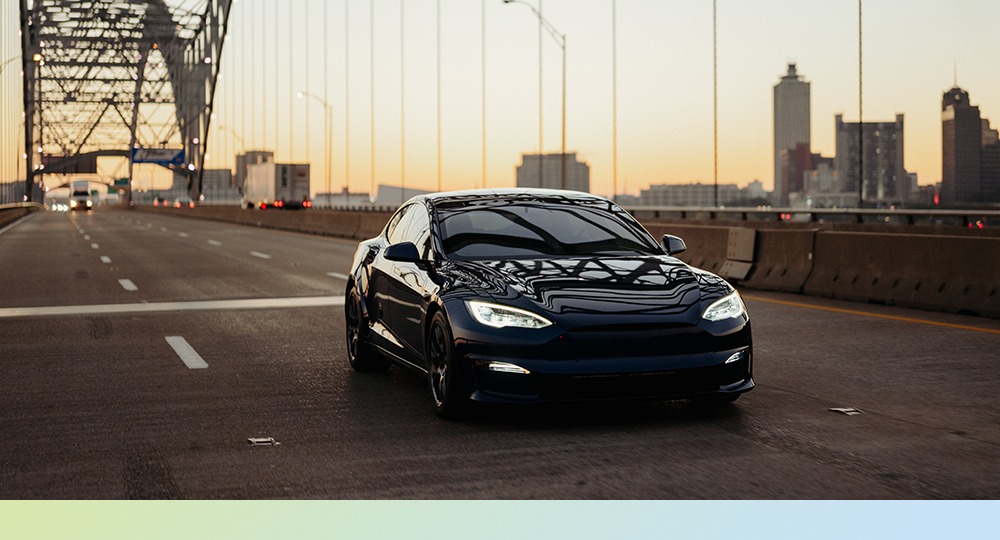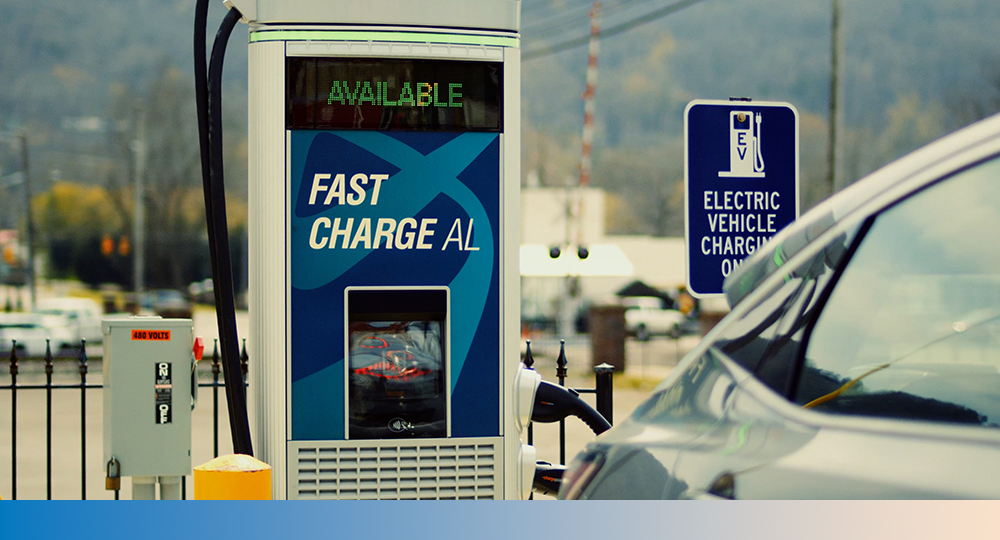Pros and cons of electric vehicles: You asked, and we did the research.

When the TVA EnergyRight Team began brainstorming ideas for our Driving EVolution blog series, we knew that creating fun, well-balanced articles citing reliable sources would be the key to developing content that friends and neighbors like you could trust.
We began our journey by paving the foundation. We covered fundamentals by producing a glossary of EV terms and a guide to battery basics. We also published articles answering 10 common questions about EVs, shared the top EV tips from the region’s owners, explored the world of home charging and more.
Now we’re ready to tackle the pros and cons of electric vehicles. Buckle up, we’re in for a ride!
Pros and cons of electric vehicles: What to know before you take the EV leap.
If you’re in the market for a new (or used) car, the odds are pretty good that you’re at least thinking about getting an EV. Or maybe even just thinking about thinking about getting an EV. J.D. Power’s 2023 U.S. Electric Vehicle Consideration Study discovered that 26% of buyers are “very likely” to consider purchasing an EV and a whopping 61% of car shoppers say they’re “overall likely” to consider purchasing an EV.
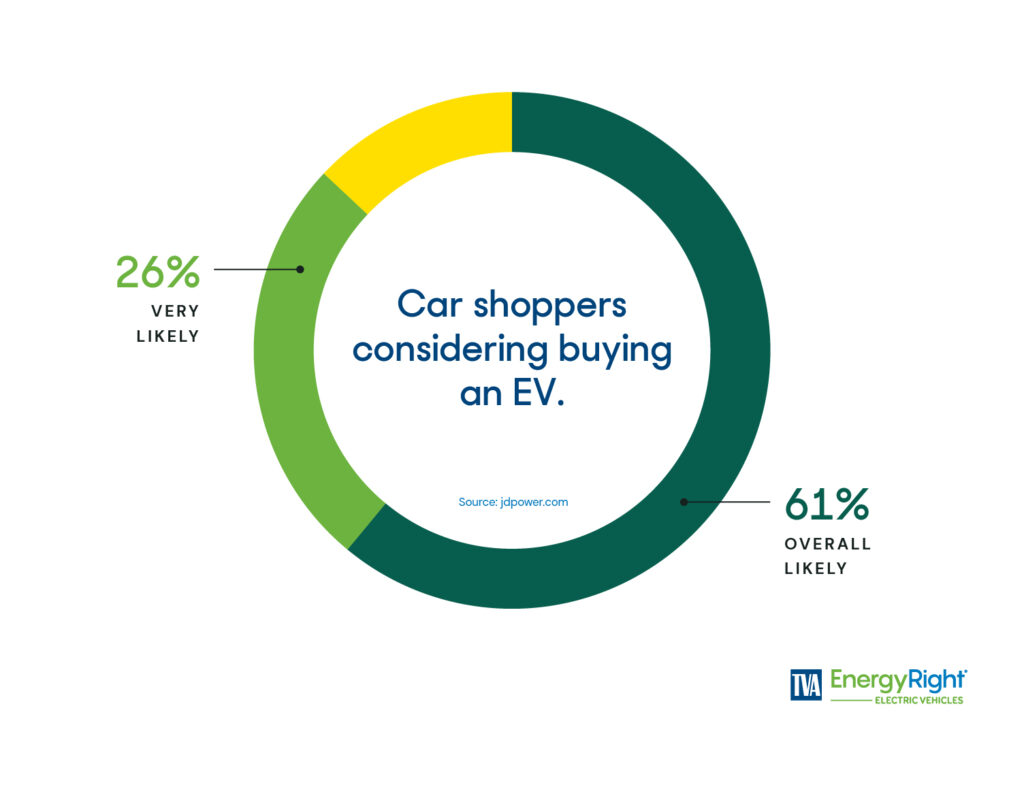
For this article, we’re focusing on battery-only EVs, also known as BEVs. For a closer look at the pros and cons of BEVs versus plug-in hybrid electric vehicles or hybrids, read “Types of EVs and the EV alphabet: What’s a PHEV, HEV and FCEV?”
Advantages of electric vehicles.
Convenience of home charging.
When the “pros and cons of electric vehicles” discussion is on the table, there’s usually a lot of talk about the public charging infrastructure. While it’s a very valid discussion, it detracts from the fact that most charging – and the most cost-effective charging – happens at home. Another recent J.D. Power report, “Level Up: Electric Vehicle Owners with Permanently Installed Level 2 Chargers Reap Benefits from Their Investment,” noted that 88% of EV owners say they charge their vehicle at home “often” or “always.”
Plus, once you have your Level 2 charging station professionally installed, home charging is as safe and as easy as plugging your cellphone in for the night. In a nutshell: Not only is charging your EV at home convenient, but it will also save you the most money. The Washington Post summed it up nicely in August: “In all 50 states, it’s cheaper for the everyday American to fill up with electrons [than gasoline].”
Much lower overall emissions.
The International Energy Agency (IEA) found that the comparative life-cycle greenhouse gas emissions of a mid-sized BEV are significantly lower than those of a similarly sized internal combustion engine (ICE) vehicle, even accounting for battery assembly and the minerals contained in an EV’s batteries.
The Office of Energy Efficiency & Renewable Energy’s fun Fact of the Week #1303 declared that the “Life-cycle greenhouse gas emissions for a 2020 small electric SUV were half those of a conventional gasoline small SUV.” And, yes, that’s a cradle-to-grave, well-to-wheels, battery-to-bumper fact.
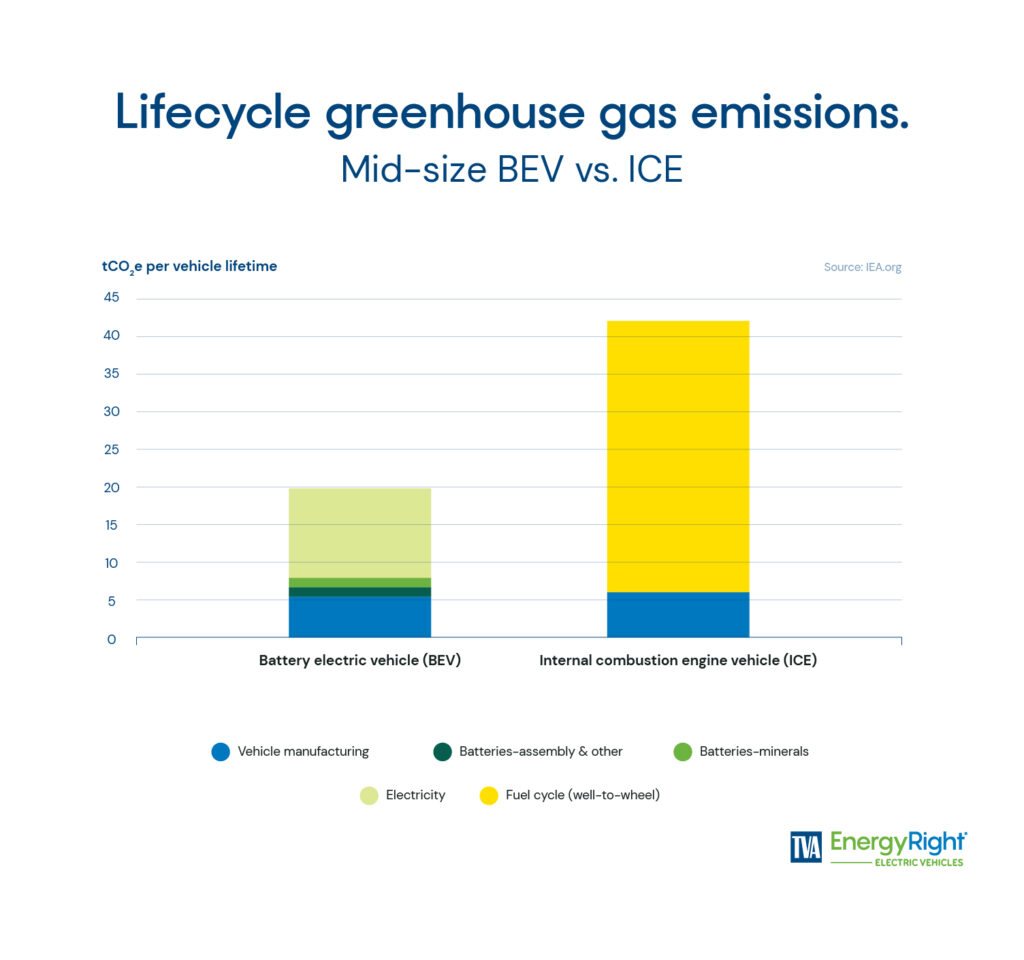
Confirming the IEA’s findings, the International Council on Clean Transportation’s most recent life-cycle assessment also shows that battery-only EVs (BEVs) and fuel cell EVs (FCEVs) have the potential to be very low greenhouse gas (GHG) emitters.
The report notes, “The emissions from manufacturing batteries, solar panels, and wind turbines are small when compared to the GHG savings from the greater efficiency and cleaner energy supply of EVs compared to conventional vehicles.”
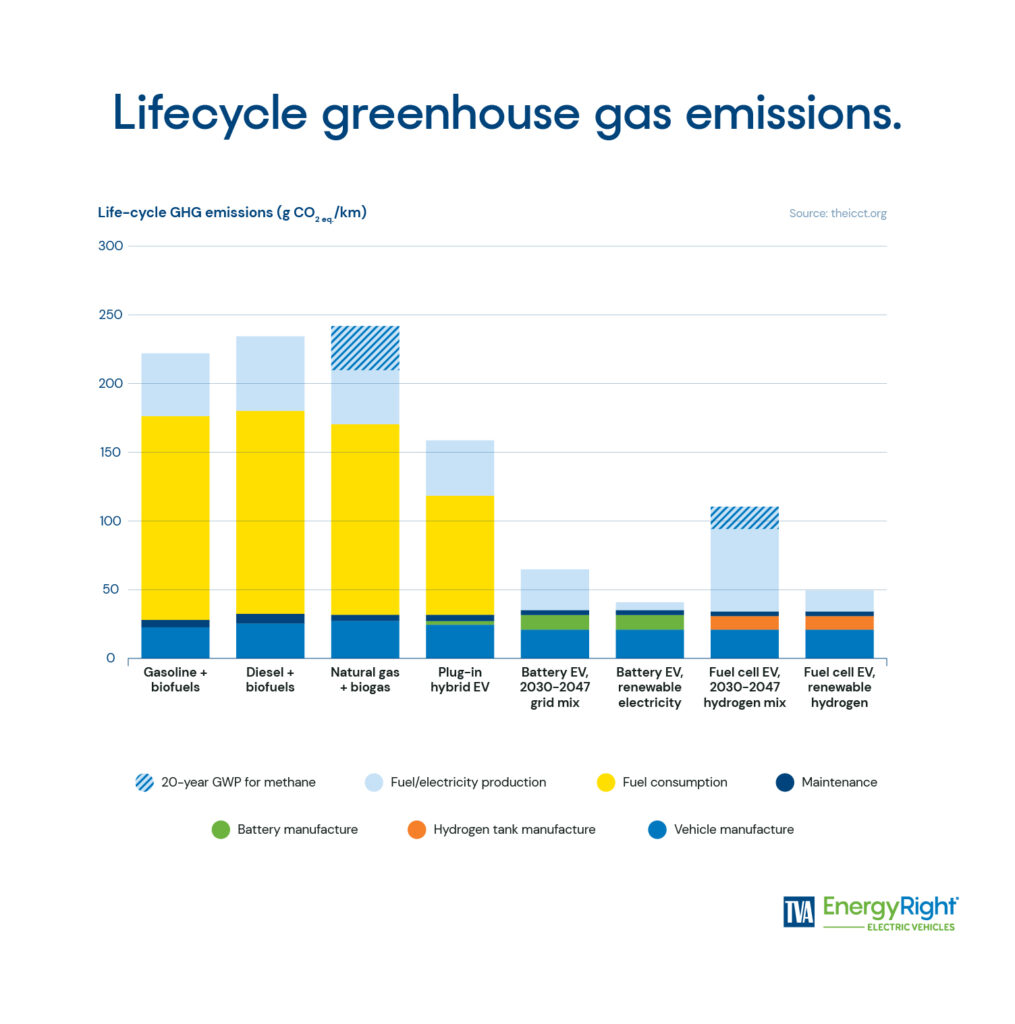
EVs are FUN to drive.
With instant torque (that’s car nerd talk for that feeling you get when you hammer the GO! pedal and your head hits the headrest while your cheeks try to hide behind your ears), they’re just fun to drive.
There are more than 20 EVs that can blast a 0-60 mph time of 3.0 seconds or less. We’d like to take credit for this sentence, but all credit goes to MotorTrend: EVs in the under-3.0-second club “don’t feel as if they’re accelerating down the road so much as they’re dropping you off a horizontal cliff.”
For some of us, that’s a good thing.
(CAUTION: We’d be remiss if we didn’t state clearly, and for the record, the importance of following speed limits and local traffic laws. Have fun, but obey speed limits, use your turn signals, leave plenty of room between you and the car in front of you, and just drive safely out there, y’all.)
They’re good for the seven-state Tennessee Valley region.
EVs use locally produced energy.
One of the reasons TVA EnergyRight is working to increase awareness and understanding of EVs throughout the region is that not only are EVs good for our air quality, but they can also help you save on fuel costs while keeping energy dollars in the area.
ICE-powered cars rely on fossil fuel imported from outside of our region or from foreign countries. EVs are fueled primarily by electricity produced in our region and supplied through local power companies, supporting local jobs and investments. Plus, TVA’s energy is nearly 60% carbon-free and TVA has aspirations to be net carbon free by 2050.
EV manufacturing is good for the region.
Electric vehicles and EV battery manufacturing have been great for our economic development. The numbers are clear: Driving electric is a big driver for our local economy. According to TVA Economic Development, automakers and suppliers have invested $17.2 billion in the region, creating more than 14,000 new jobs over the past 10 years.
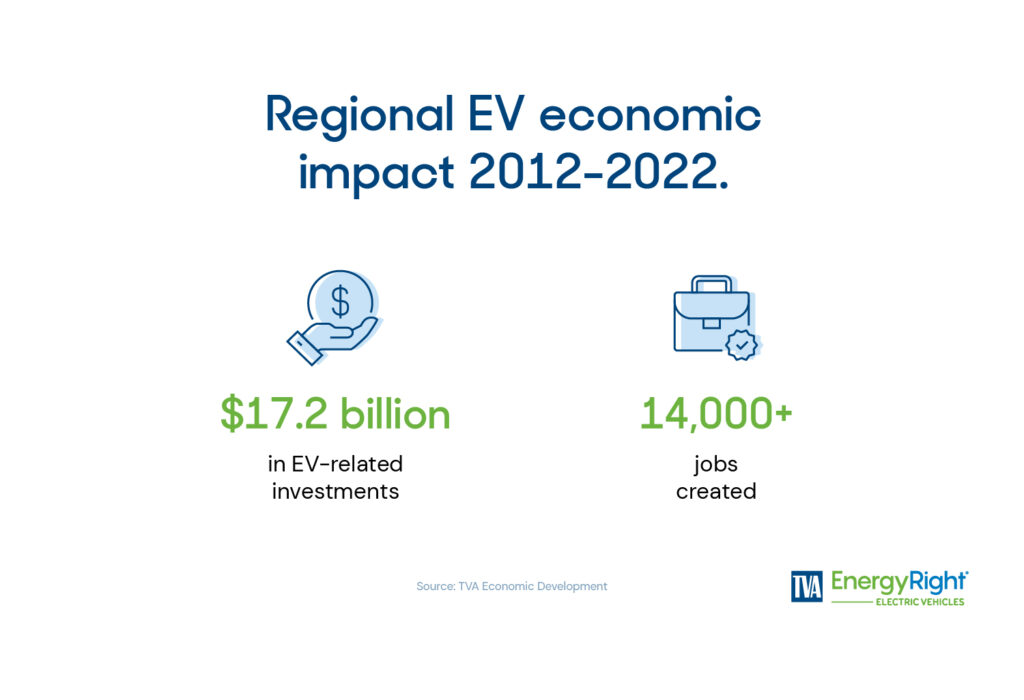
“We are pleased to have attracted so many players in the EV business,” said John Bradley, senior vice president of TVA’s Economic Development, last year, after TVA received a Top Utility award. “We are now considered a national hub for electrical vehicle production, which is highly beneficial to consumers, and that points to a prosperous future for the Tennessee Valley.”
Lower overall cost of car ownership.
A Consumer Reports analysis from 2022 found that EV owners can lower their operation and maintenance costs by $1,800 to $2,600 per 15,000 miles driven, compared to ICE owners.
Lower fueling costs.
Fueling with electricity remains less expensive than gasoline and the price fluctuations for electricity are far less volatile. Even with TVA’s October 2023 rate adjustment, those of us who live and work in the region enjoy electric rates that are lower than rates in 70% of the nation’s top 100 utilities.
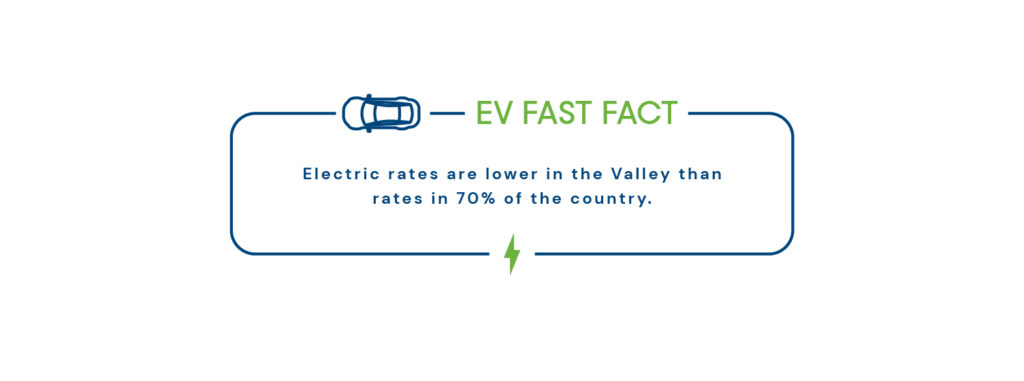
Happily, TVA’s low and stable energy rates are great for EV owners throughout the seven-state service territory.
Use this formula to estimate how much fueling with electricity will cost you:

* Find miles per kWh for common EV makes and models here. Note: mi/kWh – 1 ÷ (kWh/mi)
**Example BrightRidge residential rate as of 12/31/23.
Possible tax incentives
Saying “see ya” to the gas station is only one way EVs save drivers money. Some new EVs qualify for a hefty federal income tax credit of up to $7,500 and used EVs may qualify for incentives up to $4,000. Use our Compare EVs tool to find out which vehicles qualify.
Lower scheduled maintenance costs.
Gas-burning engines experience a lot more wear and tear and require more maintenance than an EV. When you drive an EV, you’ll still have to take it in for a checkup but the to-do list will be a lot shorter. Although brakes last longer, thanks to regenerative braking, you’ll want to make sure that your car is fitted with tires made for the heavier curb weight of your electric vehicle.
It’s easier to budget transportation costs for an EV.
Because maintenance costs are significantly less and fuel costs are more consistent, month-to-month budgeting is a lot easier with an EV.
Disadvantages of electric vehicles.
Although there are plenty of advantages to driving an EV, we recognize that there are a few drawbacks. With a little patience and planning, though, the advantages may outweigh the disadvantages for many drivers.
The public charging infrastructure is still being developed.
For now, this is true and remains a sticking point for many potential EV owners.
“The biggest friction point for consideration is the availability of public chargers,” said Stewart Stropp, executive director of EV intelligence at J.D. Power. “While owners are impressed by what automakers are offering, they’re also thinking about how, when and where they’ll be able to charge their vehicles away from home. A resounding effort to build out and improve the public charging infrastructure will emphatically increase EV purchase consideration.”
The situation is changing rapidly on this front, however. In late July 2023, a group of major automakers announced that they were forming a new company to provide EV charging stations across the U.S. The coalition includes BMW, General Motors (GM), Honda, Hyundai, Kia, Mercedes Benz and Stellantis. This great charging infrastructure news comes on the heels of manufacturers like Ford, GM, Mercedes Benz, Rivian and Volvo/Polestar announcing they would adopt Tesla’s NACS plug.
TVA EnergyRight is doing its part to address range anxiety and improve the charging infrastructure throughout the region by collaborating with state agencies, local power companies and other partners to develop the Fast Charge Network, which will ensure public fast chargers are located at least every 50 miles along the interstates and major highways across TVA’s seven-state service area by 2026.
It takes longer to fuel an EV than to fill up a gas tank.
Charging your EV at home is the most convenient and affordable way to fuel your car. For long-distance road trips, however, driving an EV will require a little more planning than driving a gas-powered car.
EV drivers we chatted with recommend planning charging stops around sightseeing, lunch and retail therapy. Several noted that they felt a sense of multitasking pleasure and actually preferred charging up over filling up and inhaling gasoline fumes. They also recommend using charging apps like ChargePoint, Chargeway, EVgo and PlugShare. You can find them here:
- Apple’s App Store: ChargePoint, Chargeway, EVgo, Electrify America and PlugShare.
- Google Play: ChargePoint, Chargeway, EVgo, Electrify America and PlugShare.
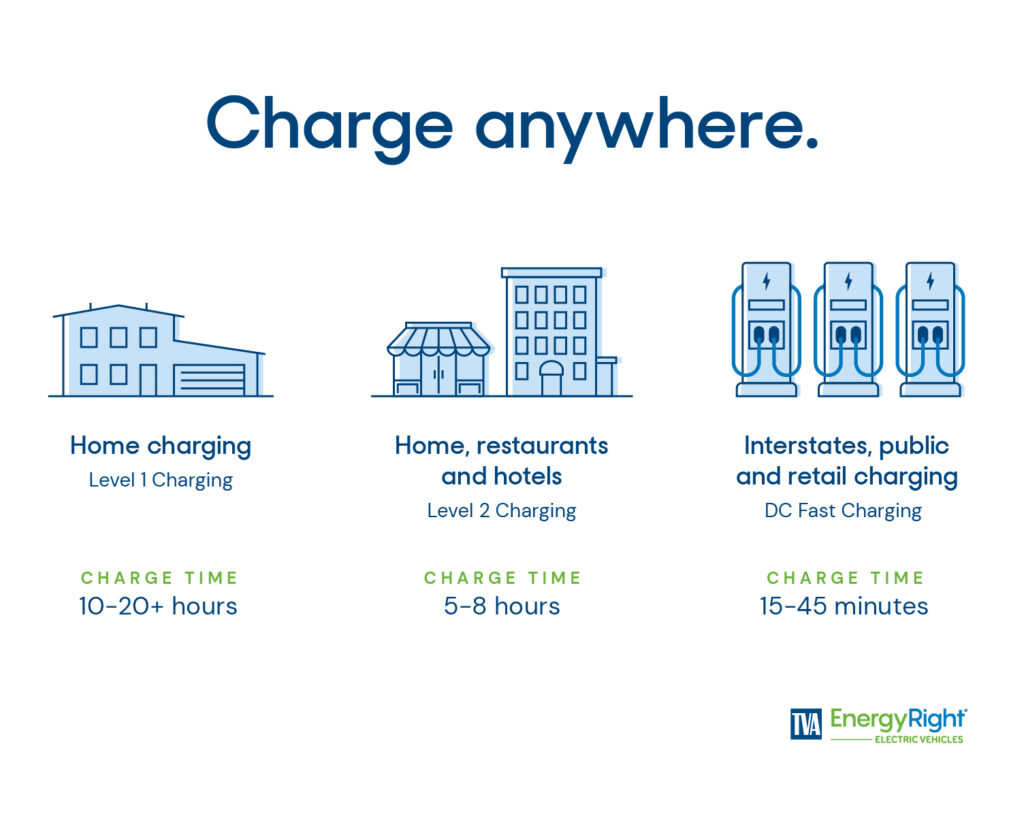
Higher initial cost.
The higher cost of buying an electric vehicle (EV) compared to a gas-powered car remains a significant barrier for many potential buyers. However, a recent decline in the price of a critical EV component—batteries—offers hope that automakers may narrow the cost gap, even as they face slowing demand.
According to Goldman Sachs analysts, batteries account for roughly 25% to 33% of an EV’s production cost. They estimate that the global average battery cost to automakers will drop to around $115 per kilowatt-hour in 2024, a 23% decrease from the previous year. Further reductions of approximately 20% are anticipated in 2025.
The cost of replacing an EV battery can be steep.
The batteries that store the energy your EV runs on are technological marvels. And yes, they’re pricey marvels. Fortunately, federal law mandates that manufacturers offer at least eight years or 100,000 miles of EV battery warranty coverage. Some manufacturers offer a 10-year warranty.
For more info on batteries, check out Battery Basics.
Towing is tough.
Many EVs, like the Rivian, Ford Lightning and Audi eTron are powerful enough to easily accommodate towing. However, honesty is one of our guiding principles, so we’re going to give it to you straight: You can tow with many EVs, but towing to maximum capacity can more than halve an EV truck’s driving range. So plan your power-ups accordingly.
(Of course, towing also takes a significant toll on gas mileage!)
The pros and cons of electric vehicles … in a nutshell.
The automotive world is an exciting place to be right now. Every day brings new technological advancements, exciting models, batteries that charge faster, go farther and last longer, and more chargers and charging options. EVs have incredible potential, and they may be a great fit for plenty of drivers in the region.
We hope you’ll continue exploring the pros and cons of EVs and maybe even schedule a test drive to see if an EV is right for you!
About the author: The TVA EnergyRight EV Team works diligently to make sure the people of the Tennessee Valley region have fact-based information about electric vehicles so they can decide how EVs fit into their lives. TVA is collaborating with state agencies, local power companies and other partners to pave the way for EV adoption in the region. This includes developing the Fast Charge Network, which will place public fast chargers at least every 50 miles along the interstates and major highways across TVA’s seven-state service area by 2026.
About our EV blogs: We know that big changes – like purchasing a vehicle that runs on electricity instead of gasoline – can lead to big questions. And that’s why we’re doing our best to provide expert, unbiased answers to your pressing EV questions. Each of our posts will include links to trusted external sources like automotive magazines, thought leaders, research-backed studies, government agencies and more. Feel free to click around!
DISCLAIMER: No TVA endorsement of any specific vehicle, car manufacturer, electric charger or other equipment is intended or implied.

